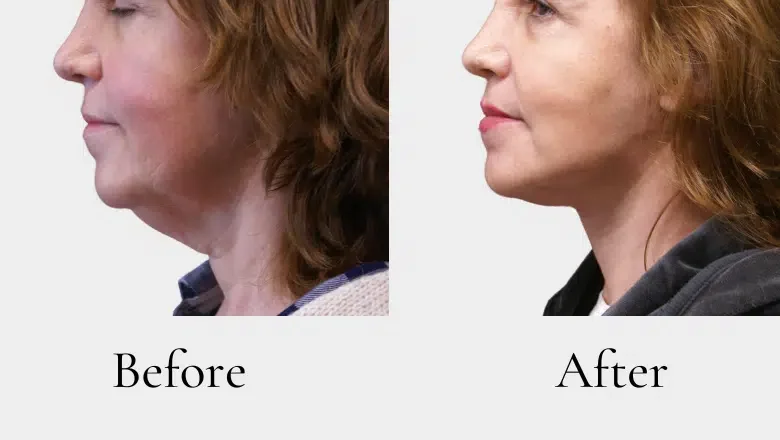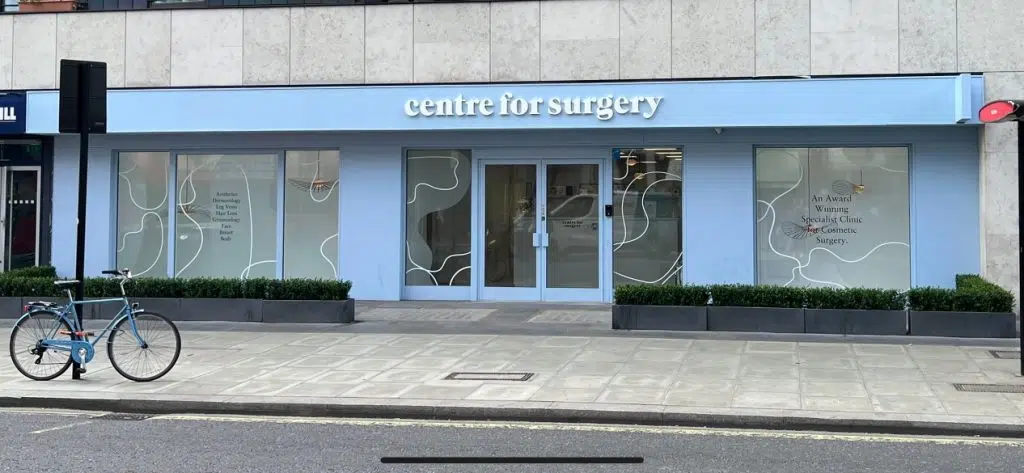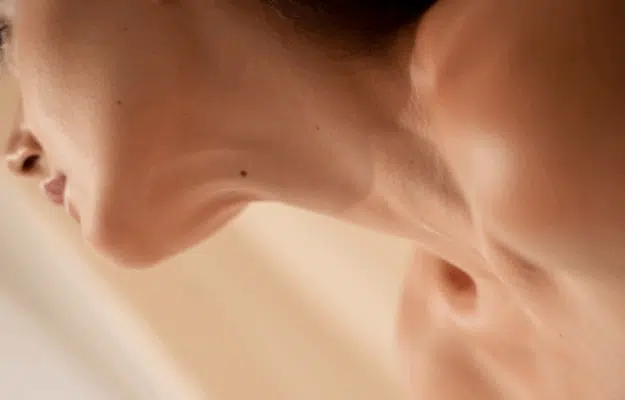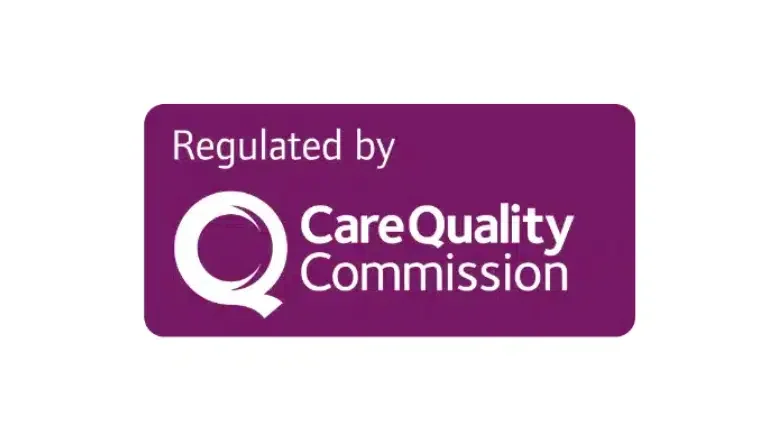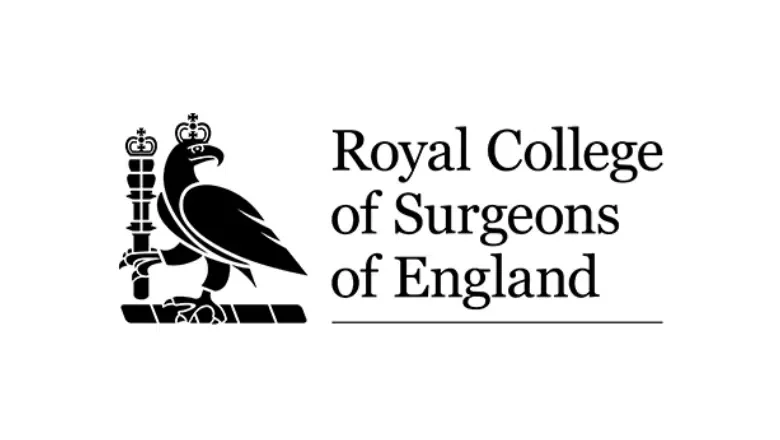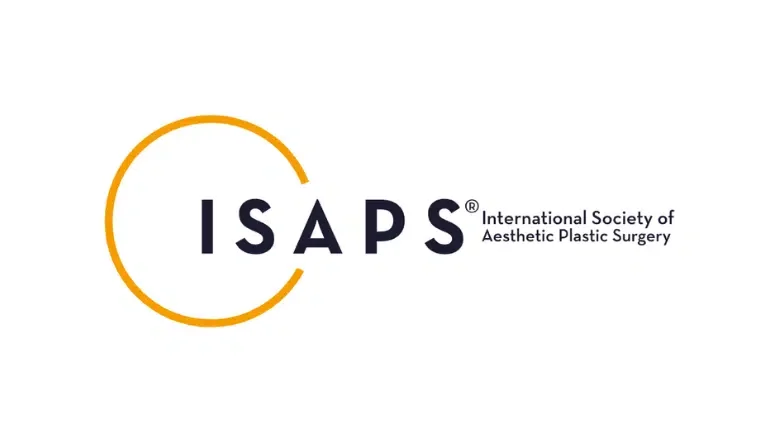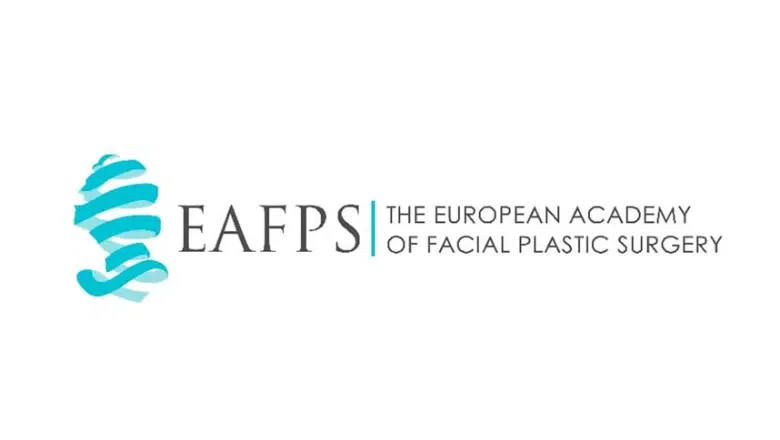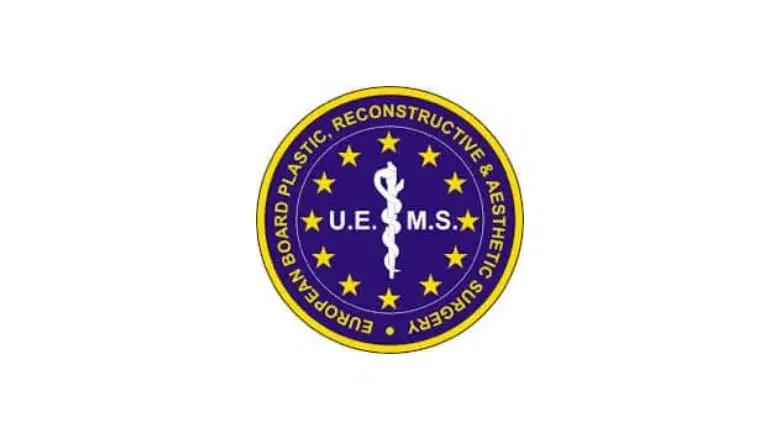SMAS facelift in London
A SMAS facelift involves tightening the SMAS layer, which is located below the skin of the face. SMAS stands for superficial muscular aponeurotic system and is a specialised layer of tissue which must be surgically manipulated as part of a SMAS facelift. The procedure is designed to achieve a youthful facial appearance, with people looking much younger than they did before surgery. SMAS facelift results can make people look up to ten years younger and can last a long time, provided patients maintain a healthy lifestyle.
RELATED: Types of SMAS facelift
What is a SMAS Facelift?
A SMAS facelift is a specialised facelift technique that lifts and repositions the deeper layers of the face to create a youthful and natural-looking result. The term SMAS refers to the superficial musculoaponeurotic system, a thin but strong layer of muscle and connective tissue that lies beneath the skin and fat. This structure plays a crucial role in facial ageing because, over time, it loses elasticity and begins to sag, leading to common concerns such as cheek laxity, deep nasolabial folds, marionette lines, and jowls.
The goal of a SMAS facelift is to restore the muscle to its original position, rather than just tightening the skin. During the procedure, the surgeon lifts the skin to reveal the SMAS layer, then carefully repositions and secures it with permanent sutures to ensure long-lasting results. This technique effectively smooths out wrinkles and restores definition to the face in the most natural way possible.
RELATED: Does a Facelift Involve Muscle Repair?
A key aspect of our SMAS facelift technique is how the skin is redraped. Once the underlying structure is lifted, the skin is repositioned without tension, allowing it to settle naturally over the face. This method prevents the tight, over-pulled appearance that some people worry about. With precise suturing and careful incision placement, scars heal into fine, barely visible lines, making the results seamless and discreet.
SMAS facelift before & after
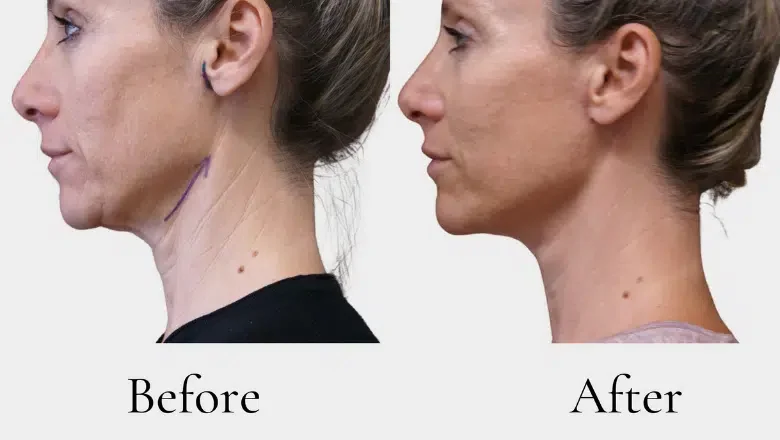
What are the benefits of a SMAS lift?
Diet, exercise or skincare products cannot stop the natural ageing process. The skin of the face and neck gradually loses skin elasticity over time. Fat loss often occurs in the midface with a reduction in the bone definition in the facial skeleton. The soft tissues of the face begin to sag with the development of flattened cheeks and deeper lines around the mouth. The jawline starts to lose its definition with the formation of jowls, and the neck skin begins to develop significant wrinkling.
RELATED: SMAS Facelift vs Deep Plane Facelift
There are several benefits of having a SMAS facelift that can help people to look several years younger, including:
- Youthful-looking lower-face
- A tighter and more defined jawline
- Elimination of jowls
- Tightening sagging facial skin
- Boost self-confidence
- Appear significantly younger with natural-looking results.
There are many different types of facelifts, also known as rhytidectomy. The SMAS facelift technique differs from traditional “skin-only” techniques in achieving natural-looking results without the wind-swept unnatural look caused by inferior skin-only techniques. Most expert plastic surgeons perform facelift surgery using the SMAS facelift technique as their preferred method of tightening facial skin.
What is the SMAS layer composed of?
The SMAS, also known as the superficial muscular aponeurotic system, is a layer of fibromuscular tissue that envelopes the face and neck. This continuous tissue layer attaches the overlying facial skin to the facial bones and is integrated with the muscles of facial expression. The SMAS is the tissue layer that must be surgically tightened during a facelift to achieve natural-looking results that make people appear refreshed and rejuvenated. The old facelift method focused on tightening the skin layer only without tightening the SMAS. All advanced facelift techniques involve surgical modification of the SMAS layer by performing a limited resection of the SMAS in broad faces, also known as SMASectomy or by SMAS plication or folding in longer, more narrow faces.
Am I suitable?
The decision to have a SMAS facelift is a significant one that may have been preceded by years of research to find the right clinic and surgeon. Many people are naturally keen to know if they are suitable candidates for SMAS facelift surgery. We would recommend that all patients should be non-smokers as smoking is associated with impaired wound healing and a higher risk of complications. Ideal candidates often suffer from loose skin, which affects the jowls, neck, and jawline, resulting in an overall loss of facial definition. Some patients may feel they look excessively tired even when they feel full of energy. Determining your suitability for the procedure will require an in-person consultation with an experienced plastic surgeon. Some people are naturally better suited to the procedure compared with others. A full face and neck lift is ideal for women and men in their 50s and above. A mini facelift is suitable for women and men in their 40s.
Your facelift consultation at Centre for Surgery
The first step is to meet with one of our expert surgeons for an in-depth consultation at our Baker Street clinic in London. We understand this can be a major decision for many patients who have been considering having a SMAS facelift. This is why we try to make the process as easy and stress-free as possible. Our team are here to explain each step of the process in detail so that you can be confident in moving forward with your decision to have a SMAS facelift at Centre for Surgery in London.
Your surgeon will first conduct a clinical assessment to help determine which type of facelift would be most suitable based on several factors. Every patient is unique in terms of their facial anatomy and bone structure and what they are looking to achieve from having a SMAS facelift. Your surgeon will guide you through the options available from non-invasive techniques using injectables, laser, mini facelift or a full facelift which could involve a SMAS technique or deep plane facelift technique.
At the consultation, your surgeon will:
- Discuss the different facelift options with you.
- Explain the potential risks and complications associated with facelift surgery.
- Explain how the procedure is carried out.
- Give you an idea of what to expect before, during and after the procedure.
- Take photos and perform a thorough physical examination.
- Answer your questions about any aspect of the SMAS facelift procedure.
Different types of face lift and neck lift
Facelift techniques have evolved significantly over the last ten years, which allows patients to achieve youthful and natural-looking results with increased surgical precision and safety. The type of facelift chosen will depend on your individual needs and desires. Some patients may only need a mid-face lift, mini facelift or neck lift. Older patients will require a more comprehensive facelift which may be combined with a neck lift.
Full face and neck lift
This procedure is suitable for both women and men who are over the age of 50 and would like to achieve dramatic improvements in the appearance of their face and neck. The procedure involves tightening and elevation of the SMAS layer whilst minimising overlying tension on the skin. This allows the surgeon to produce long-lasting results that look natural and harmonise with your overall facial features. A full face and neck lift involves making an incision within the temporal hairline, which extends around the natural contours of the ear and into the hairline. A neck lift requires a separate incision located beneath the chin. Once the incisions have been made, the skin and superficial fat layer are gently separated from the underlying SMAS layer and the platysma muscle of the neck. The surgeon will usually perform the neck lift first by repairing the platysma muscle by stitching it together in the midline. The lateral aspect of the platysma muscle is then elevated into a higher position. This helps to create a well-defined neck-chin angle. The SMAS layer is surgically tightened, followed by the removal of excess skin. The skin is then gently re-draped over the face and neck before being stitched meticulously to produce virtually invisible scars. Most types of facelift surgery now involve a combination of facial fat grafting or facial implants to produce synergistic results by replenishing lost volume as part of the facial ageing process. Patients can achieve volume restoration to the cheeks or beneath the eyes in addition to tightened and firmer-looking skin.
Mini facelift (short scar facelift)
A mini facelift is suitable for both women and men in their 40s and presents with early signs of facial ageing. In many cases, a neck lift is not required. A mini facelift is also known as a short scar facelift and involves making shorter incisions which are situated in the temporal hairline and in front of the ear only. Although a traditional full facelift is the most effective treatment for addressing loose skin, a short scar facelift can produce fantastic results for younger patients.
The incision for a short scar facelift commences at the temple hairline and extends to the front of the ear. The surgeon will then gently separate the skin and superficial fat layer from the underlying SMAS layer. The SMAS is then surgically tightened, most commonly using a placation technique. A small amount of excess skin affecting the cheek may be removed. Scars are considered minimal after a mini facelift, with most women still being able to wear their hair in various hairstyles after recovery has been completed.
As with most types of facelift surgery, optimum results are achieved with a mini facelift is combined with fat transfer to the face to both lift sagging tissues and fill areas of volume loss. People with excess fat under the chin, also known as a double chin, can have this treated with chin liposuction as part of the same procedure.
Mid facelift (cheek lift)
As part of the ageing process, the cheeks begin to sag, and the lower eyelids may become stretched with the appearance of prominent bulging. Some men and women may have naturally flat cheekbones, which may result in facial ageing affecting the middle part of the face first. This can make people look much older than they actually are.
A mid-facelift is designed to address the cheeks, corners of the mouth and lower eyelids to produce a youthful appearance. The procedure is better suited for younger patients who would like to improve the appearance of the midface to halt accelerated signs of facial ageing and achieve fuller-looking cheeks. The incision for a mid-facelift is positioned along the margin of the lower eyelid, which extends into the lateral part of the lower eyelid crease. Mid-facelift surgery is commonly combined with fat grafting and cheek implants to optimise the contour of the midface. Incisions for this procedure are well located in natural skin creases, which helps minimise the appearance of scars and reduce the incidence of complications.
What Is the Difference Between a Deep Plane and a SMAS Facelift?
The main difference between a deep plane facelift and a SMAS facelift lies in how the underlying muscle and tissue are lifted. In a SMAS facelift, the surgeon lifts the skin to access the superficial musculoaponeurotic system (SMAS), which is then repositioned to restore youthful contours before redraping the skin over it. A deep plane facelift, on the other hand, lifts the skin and muscle together as one unit, addressing deeper layers of the face for a more comprehensive lift.
Which technique is better? That depends on the surgeon’s expertise and approach. Some surgeons achieve excellent results with deep plane facelifts, while others produce equally outstanding outcomes with the SMAS technique. There is ongoing debate within the surgical community, and every surgeon tends to favour the method that works best in their hands.
Each procedure has its advantages. SMAS facelifts are often considered a safer option because they don’t involve working in the same plane as the facial nerves, reducing the risk of nerve damage. They also typically result in less swelling, particularly in the mid-face area around the mouth, since the dissection doesn’t go as deep. However, deep plane facelifts offer a more extensive lift by repositioning both the skin and underlying structures simultaneously, which some surgeons believe creates a more natural and longer-lasting result.
A key factor in the success of a SMAS facelift is how it’s performed. The technique matters just as much as the method itself. The way our surgeons approach it involves lifting from the jowl, rather than simply tightening near the ear. This ensures a strong, natural lift comparable to what a deep plane facelift achieves. A well-executed SMAS facelift can be just as effective as a deep plane facelift when performed correctly by an experienced surgeon.
Every surgery is unique, and the phrase “in my hands” is often used by surgeons to describe why a particular technique works best for them. Facelift success is not just about choosing the right method—it’s about the surgeon’s skill, experience, and the small refinements they make during the procedure to achieve the best results.
SMAS facelift procedure
SMAS facelift surgery takes place at our Baker Street clinic in Marylebone and is most commonly performed under a general anaesthetic and lasts between 2 to 3 hours, depending on the extent of surgical correction required.
Step one – anaesthesia
Several pre-operative checks will be undertaken before your procedure. You will be seen by your anaesthetist, who will prescribe medications to ensure you are comfortable throughout the anaesthesia.
Step two – incisions
Once you have been placed under anaesthesia, the surgeon will begin the SMAS facelift by making several small incisions. The size and location of the incisions will depend on your goals for treatment and the type of facelift you are having. Most incisions commence at the hairline in the temple area and curve around the ear. A separate incision may be made beneath the chin if you have a neck lift simultaneously. The incisions are expertly positioned in natural skin folds and creases to minimise their appearance.
Step 3 – SMAS lift
Once the incisions for a facelift have been performed, the surgeon will surgically adjust the SMAS layer to achieve tightening. The first approach is to fold the SMAS layer onto itself in a superior direction before trimming excess skin. This technique is known as an SMAS plication facelift procedure. The second technique is to tighten the SMAS later by removing a weakened portion, followed by careful reattachment using stitches placed upwards. This technique is known as an SMASectomy or SMAS resection facelift.
Both SMAS facelifts involve longer incisions than a MACS facelift, and the healing time is longer, with additional bruising and swelling during recovery. However, the benefits of the SMAS facelift technique outweigh the disadvantages due to its ability to produce long-lasting results that appear natural when looking for a vibrant appearance.
Step 4 – Closing incisions
Once the facial muscles have been tightened, excess skin will be trimmed, and small drains will be placed to prevent fluid buildup beneath the skin and minimise pressure on the incision site. The skin is then carefully closed with dissolvable stitches.
Recovery after SMAS facelift surgery
We recommend resting for two weeks after surgery to ensure optimal healing with minimal risk of complications. Normal activities can be resumed after this time. Recovery after an SMAS facelift is relatively quick, with most people returning the day after surgery to have the dressings reduced and any drains removed.
We recommend wearing a specialised compression garment for at least two weeks, which helps minimise swelling and the risk of haematoma formation and helps maintain the new contours of your lower face and neck. Any non-dissolvable skin stitches are removed one week after the procedure. You should notice a significant reduction in facial swelling after two weeks. It is important to bear in mind that it can take up to 3 months before the final results of a SMAS facelift can be seen.
Feeling tightness and temporary numbness during the early healing phase is normal. Any postoperative discomfort can be easily controlled with over-the-counter painkillers. Your surgeon will give you comprehensive information about the recovery process at your consultation. Your medical history will be taken, and any pre-existing medical conditions, such as hypertension or a tendency for excessive scarring, will be optimised as much as possible before surgery. You should follow the postoperative care instructions to get the best facelift results.
RELATED: Are facelift results permanent?
How much does a SMAS facelift cost?
The cost of a SMAS facelift will be determined by several factors, and every procedure is customised to the needs of the individual patient. The extent of surgical correction required, whether the procedure is combined with other treatments, and the surgeon you choose can affect the overall price of a SMAS facelift.
RELATED: How much does a facelift cost?
Once you have your consultation, your dedicated patient coordinator will give you a detailed quotation. The quotation will include the surgical costs, anaesthetic fees, facility fees, and aftercare, including all follow-up and postoperative appointments. To get a price estimate for a SMAS facelift, call us today on 020 7993 4849 and speak to one of our friendly and knowledgeable patient coordinators.
Finance options
Centre for Surgery partners with Chrysalis Finance, the leading medical finance provider in the UK. We offer a full range of finance options, including 0% finance for eligible applicants.
Medical References
What procedures can be combined with a SMAS facelift?
Eyelid surgery
This procedure is also known as blepharoplasty and aims to eliminate excess skin and reduce puffiness of the eyes. An eyelid lift can help people look less tired and enhance the results of a facelift lasting over eight years.
Brow lift
An eyebrow lift is designed to smooth and deepen lines and wrinkles affecting the forehead and lift a sagging brow that may be a cause of heavy or hooded eyelids. Brow lift surgery can be performed on women and men to achieve a youthful-looking upper face.
Facial implants
Tightening of the facial skin with the lifting of sagging tissues is sometimes insufficient to address the signs of facial ageing. Other people may have a deficient facial skeleton with flattened cheekbones or a weak-looking jawline. These features can be surgically enhanced with specialised implants such as chin implants or jawline implants to optimise facial balance and enhance the appearance of the cheeks, chin or jawline.
Skin texture can be enhanced with non-invasive aesthetic treatments, including laser resurfacing or chemical peels, which can be combined with a facelift to boost the longevity of results. Here at Centre for Surgery, Our surgeons work closely with aesthetic practitioners to produce customised treatment plans to optimise skin texture using gold-standard treatments.
Is a SMAS Facelift Worth It?
Why choose Centre for Surgery for SMAS facelift surgery?
Centre for Surgery is one the leading centres in the UK for facelift surgery. Our surgeons are renowned in London for their expertise in SMAS and deep place facelifts using the most advanced surgical techniques.
Call us today on 020 7993 4849 or complete the contact form below to schedule a facelift consultation at our state-of-the-art Baker Street clinic in Marylebone.
FAQs
-
What is a SMAS facelift?SMAS facelift is a surgical technique used in facelift procedures to address the signs of facial ageing such as sagging skin, wrinkles, and jowls. SMAS stands for Superficial Musculo-Aponeurotic System, which is a layer of tissue located beneath the skin in the face and neck.
In the SMAS facelift, the surgeon makes incisions in the hairline and around the ears to access the SMAS layer. They then lift and reposition the SMAS layer to create a more youthful appearance, as well as tighten the skin and remove excess fat if necessary. By targeting the SMAS layer, the surgeon can achieve longer-lasting and more natural-looking results compared to traditional facelift techniques.
SMAS facelifts can also be combined with other facial rejuvenation procedures such as neck lifts, brow lifts, and eyelid surgery to achieve comprehensive facial rejuvenation. It is typically performed under general anaesthesia and can take several hours, depending on the extent of the procedure. Recovery time can vary, but patients are usually able to return to work and normal activities within two to four weeks after the surgery. -
What are the benefits of a SMAS facelift?The SMAS facelift is a popular and effective technique for facial rejuvenation that offers several benefits. Some of the benefits of SMAS facelift include:
Longer-lasting results: The SMAS facelift addresses not just the skin, but also the underlying facial muscles, providing a more comprehensive and longer-lasting result than other facelift techniques.
More natural-looking results: The SMAS facelift technique lifts and repositions the deeper layers of the face, creating a more natural-looking and youthful appearance.
Reduced scarring: Because the SMAS facelift involves lifting and repositioning the deeper layers of the face, less skin needs to be removed, resulting in smaller, less noticeable scars.
Customisable procedure: The SMAS facelift can be tailored to each patient's unique facial anatomy and aesthetic goals, resulting in a more personalized and customised procedure.
Improved facial contours: The SMAS facelift not only lifts and tightens the skin, but also restores volume and contours to the face, resulting in a more youthful and rejuvenated appearance.
Less invasive: Compared to other facelift techniques, the SMAS facelift is less invasive and involves smaller incisions, resulting in less trauma and a faster recovery time. -
What is the difference between a SMAS facelift and deep plane facelift?Both SMAS facelifts and deep plane facelifts are advanced techniques used to address signs of ageing in the face and neck. The main difference between the two procedures is the depth at which the surgeon works on the facial structures.
A SMAS facelift involves lifting and tightening the SMAS layer, which is a deeper layer of tissue under the skin that surrounds the muscles and fat in the face. This technique helps to address moderate to severe sagging in the midface, jowls, and neck. SMAS facelift is less invasive and requires a shorter recovery period compared to deep plane facelift.
On the other hand, a deep plane facelift involves dissection and repositioning of deeper facial structures, including the muscles and fascia, in addition to the SMAS layer. This technique can provide more significant lifting of the midface, jowls, and neck and can address more severe signs of ageing. However, it is a more invasive procedure and may require a longer recovery period. -
How should I prepare for a SMAS facelift?The smoothest recovery can be achieved by following all of your surgeon's instructions before and after the procedure. You should avoid taking certain herbal medications. Aspirin and medicines containing aspirin should be stopped at least two weeks before surgery.
Smoking should be stopped at least six weeks before surgery to minimise the risk of wound healing complications.
Alcohol should be stopped for at least five days before surgery. You should continue to take certain medications for conditions such as high blood pressure. You will need a responsible adult escort to collect you from the clinic and look after you for the first two days after surgery. If you have short hair, it may be helpful to grow your hair longer as this will help to cover early facelift scars. -
When is the best time to have a facelift?Although there is no ideal time to have facelift surgery, facelifts are usually carried out from the early forties to mid-70s. The best results are obtained when people still have good skin elasticity.
Ageing proceeds at different rates in people depending on exposure to environmental factors such as excessive sun exposure, inadequate skincare or smoking. -
How Long Does a SMAS Facelift Last?A SMAS facelift typically provides results that last between 10 to 15 years, similar to a deep plane facelift. This procedure effectively turns back the clock, making you look significantly younger. While the ageing process continues naturally, you will always appear more youthful than if you had never had the surgery.
However, a facelift does not stop time completely. Over the years, changes will still occur, and your face will gradually develop new signs of ageing. That being said, the improvements from a SMAS facelift remain noticeable, helping you maintain a refreshed and rejuvenated appearance for many years. -
Can a SMAS facelift be combined with fat transfer?Nowadays, fat transfer is an essential part of any facelift procedure to produce comprehensive rejuvenation effects. Combining a facelift with fat transfer allows the restoration of facial volume, which has been lost as part of the ageing process. Deeper facial tissues can be tightened as part of a SMAS facelift simultaneously.
-
Will I have scars after a SMAS facelift?All incisions will result in the formation of scars. The scars in a facelift are usually well concealed in natural skin folds and creases. The incisions for a mini facelift extend from the temporal hairline to the front of the ear only. A full facelift extends the incision around the ear and into the posterior hairline. Once facelift scars have healed, they are barely noticeable. Although they will initially appear red, they will lighten and fade over the first three months into a faint white line.


